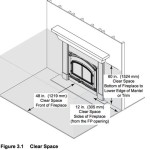Decorating the Wall Above Your Fireplace: A Comprehensive Guide
The fireplace often serves as a focal point in a living room or family room. Consequently, the wall above the fireplace demands thoughtful consideration in terms of decoration. This space presents an opportunity to enhance the overall aesthetic of the room and create a cohesive and visually appealing environment. Selecting the appropriate decorations involves considering the existing décor, architectural style, and personal preferences. Careful planning and execution can transform this often-overlooked area into a captivating element of the home.
Successfully decorating the wall above a fireplace requires a clear understanding of scale and proportion. The size of the wall and the dimensions of the fireplace itself play crucial roles in determining what types of decorations will be most effective. A small fireplace in a large room calls for different decorative choices than a large fireplace in a smaller space. The goal is to achieve visual balance, preventing the décor from appearing either too small and insignificant or too large and overwhelming.
Color and texture are also vital components to consider. The colors of the wall, the fireplace surround, and the chosen decorations should harmonize to create a cohesive and inviting atmosphere. Texture adds depth and interest, preventing the space from feeling flat and uninspired. Varying textures can be achieved through the use of different materials, such as wood, metal, fabric, and stone. The interplay of color and texture can significantly impact the overall look and feel of the room.
The style of the fireplace and the room as a whole should guide the selection of decorative items. A traditional fireplace might benefit from classic artwork or antique mirrors, while a modern fireplace might be better suited to minimalist sculptures or abstract paintings. Maintaining consistency between the decoration above the fireplace and the existing design scheme will create a unified and harmonious space.
Key Considerations Before Decorating
Before beginning the decorating process, a number of key factors should be examined. This preliminary assessment ensures that the final result is both aesthetically pleasing and functionally appropriate.
Firstly, assessing the architectural style of the fireplace and the surrounding room is critical. A rustic stone fireplace in a log cabin will require a different decorating approach compared to a sleek, modern fireplace in a contemporary apartment. Identifying the dominant architectural style will provide a framework for selecting suitable decorations. For instance, a farmhouse-style fireplace might be complemented by distressed wood signs or vintage-inspired artwork, while a minimalist fireplace could be enhanced by a single piece of abstract art or a simple geometric mirror.
Secondly, evaluating the size and proportions of the wall above the fireplace is essential. A large wall can accommodate a larger, more impactful piece of art or a gallery wall arrangement, while a smaller wall might be better suited to a single, smaller item or a carefully curated collection of smaller pieces. Accurate measurements are crucial for ensuring that the chosen decorations are appropriately scaled for the space. Using painter's tape to visualize the size and placement of potential decorations can be a helpful step in this process.
Thirdly, considering the purpose of the room and the desired ambiance is important. A living room that is primarily used for relaxing and entertaining might benefit from decorations that create a warm and inviting atmosphere, such as a collection of candles, family photos, or cozy textiles. A more formal living room might call for more sophisticated and elegant decorations, such as a large-scale painting or a decorative mirror. The intended use of the space should inform the selection of decorations and contribute to the overall functionality and comfort of the room. Also, consider if the fireplace is functional. If so, make sure any decorations are heat resistant and placed so as not to present fire hazards.
Popular Decoration Options
A wide range of decorative options can be used to enhance the wall above a fireplace. The best choice will depend on the specific characteristics of the space and the desired aesthetic.
Artwork is a classic and versatile option. Paintings, prints, and photographs can add color, texture, and visual interest to the space. The subject matter, style, and size of the artwork should be carefully considered to ensure that it complements the fireplace and the surrounding room. A large-scale painting can serve as a focal point, while a collection of smaller prints can create a more dynamic and layered effect. Choosing artwork that reflects personal interests and style can add a personal touch to the space.
Mirrors are another popular choice. They can enhance the sense of space and light in a room, making them particularly useful in smaller or darker spaces. A large decorative mirror can serve as a focal point, while a collection of smaller mirrors can create a more eclectic and interesting arrangement. The shape, size, and frame of the mirror should be carefully considered to ensure that it complements the fireplace and the surrounding décor. Mirrors can also reflect light and create a brighter, more inviting atmosphere.
Shelves offer a functional and decorative option. They can be used to display books, plants, decorative objects, and other items. The shelves can be made of wood, metal, or glass, and they can be mounted directly to the wall or supported by brackets. The style and size of the shelves should be carefully considered to ensure that they complement the fireplace and the surrounding décor. Shelves can also be used to add storage space to the room.
Sculptures and decorative objects can add texture, dimension, and visual interest to the space. These items can be displayed on shelves, mantels, or directly on the wall. The style, size, and material of the sculptures and decorative objects should be carefully considered to ensure that they complement the fireplace and the surrounding décor. These items can also be used to add a personal touch to the space and reflect individual interests and style. Consider grouping items in odd numbers for a more visually appealing arrangement.
Achieving Visual Balance and Harmony
Creating a visually balanced and harmonious display above the fireplace requires attention to detail and a keen eye for design principles.
Firstly, the concept of symmetry should be considered. A symmetrical arrangement involves placing identical or nearly identical items on either side of a central point, such as the center of the fireplace. This approach creates a sense of order and balance. For example, two identical lamps or vases placed on either side of a piece of artwork can create a symmetrical effect. However, strict symmetry can sometimes feel overly formal or rigid. Therefore, it is often beneficial to incorporate subtle variations to add visual interest and prevent the arrangement from feeling too predictable.
Secondly, asymmetry offers a more relaxed and informal approach. An asymmetrical arrangement involves placing different items on either side of a central point, but with a focus on achieving visual balance. This can be achieved by varying the size, shape, or color of the items, while still maintaining a sense of equilibrium. For example, a large painting on one side of the fireplace can be balanced by a collection of smaller objects on the other side. Asymmetrical arrangements can create a more dynamic and interesting visual effect, but they require careful planning to ensure that the overall composition remains balanced and harmonious.
Thirdly, the use of focal points is essential. A focal point is a single item or element that draws the eye and serves as the center of attention. This could be a large painting, a decorative mirror, or a unique sculpture. The focal point should be strategically placed to create a clear visual hierarchy and guide the viewer's gaze. Surrounding decorations should complement and support the focal point, without competing for attention. Creating a clear focal point helps to create a sense of order and direction in the arrangement.
Finally, negative space plays a crucial role. Negative space refers to the empty areas surrounding the decorations. Leaving sufficient negative space around the items allows them to breathe and prevents the arrangement from feeling cluttered or overwhelming. Negative space can also help to highlight the individual items and create a sense of calm and serenity. Avoid the temptation to fill every available space with decorations. Instead, embrace the power of negative space to create a more balanced and visually appealing composition.

How To Learn The Basics Of Arranging Artwork Above Fireplace Decor Home

The Dos And Don Ts Of Hanging Art Above A Fireplace Houzz

How To Decorate Above A Fireplace In Two Story Room Worthing Court

Artwork Options For Above My Fireplace It S A Personal Thing Addicted 2 Decorating

Decorating Challenge Art Above The Fireplace Icanvas Blog Heartistry

36 Fireplace Decor Ideas Modern Mantel

10 Fireplace Mantel Decorating Ideas Full Service Chimney

Fireplace Decor Hearth Design Tips

36 Fireplace Decor Ideas Modern Mantel

Fireplace Mantels Are Now Trending Here The Top Ways To Style Yours
Related Posts








